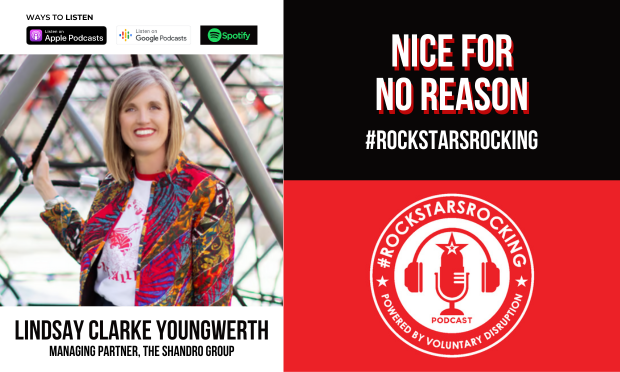Voluntary benefits are becoming amainstay in the employee benefits package. I don't think anyone —brokers, employers or even employees — doubt that today. Voluntarybenefits are popular because even though employees are paying forthese benefits, they can get what they want by customizing theirbenefits package for their own particular needs.
|Traditional voluntary benefits include products that complementcompany-sponsored core benefits and round out a benefit portfoliothat suits employees' individual needs. With non-traditionalvoluntary benefits, employees can personalize their benefitspackage even further, choosing optional benefits that resonate themost with their needs and lifestyles.
|That's an important consideration today. With a thriving economyand positive job market, attracting and retaining employees is abigger challenge for employers than it has been in years. With adiverse workforce and employees' desire to “want it their way,”companies are recognizing the role that both traditional andnon-traditional voluntary benefits can play in distinguishing theiremployee benefits package.
|We've all known traditional voluntary benefits have a place inthe benefits mix. Now, non-traditional voluntary benefits arebecoming standard inclusions in employee benefits packages. Notonly are the non-traditional voluntary benefits a truedifferentiator for employers, but they also allow employees toextend their financial safety net as well as enhance their personallives. The ability to have these choices engages employees morethan other benefits.
|So what should we expect in 2017 in non-traditional voluntarybenefits? Here are six trends to look for:
|1. Employers will offer more non-traditional voluntarybenefit options
|A selection of non-traditional voluntary options is a must-havefor companies who want a competitive benefits package.Non-traditional voluntary benefits — including services such asidentity theft protection, cybersecurity insurance, financialcounseling services, tuition assistance and elder care — have risenin popularity in recent years because they allow the employee tochoose benefits that meet their changing needs and lifestyles.
|Since employees pay the entire cost of non-traditional voluntarybenefits, there's no reason for employers not to offer a variety.There are new non-traditional voluntary benefits appearing everyyear. And I predict that we should look for more options to emerge,including the more innovative ones like egg harvesting that showed up a fewyears ago.
|A recent benefit trends study from MetLife showed the morevoluntary benefit options employees have, the happier and moreloyal they are. This certainly demonstrates to employers that theyneed to offer a variety of voluntary benefits. In fact, the MetLifestudy reported that employee satisfaction is found at companiesthat offer 11 or more benefits.
|2. Customization will go to a new level
|There's more to customizing benefits than employee age alone.While looking at the characteristics of the generations isvaluable, over-generalizing the generations doesn't fostercustomization because it fails to take into considerationdifferences in lifestyles, financial habits and more. Lookingcloser at personas within the generations based on lifestyle andbuying preferences provides a method for employers to furthercustomize benefits that are important to their workforce.
|Organizations that take customization of benefits to heart andembrace this further segmentation of the generations will be ableto structure their benefits in a way that will attract, retain and engage the talent they needfor the future. The coming year will see employers takingcustomization to another level by segmenting the generations.
|3. Digitalization will expand even more
|Now that millennials dominate the workforce, they are drivingthe digitalization of benefits education and benefitscommunication. In 2017, look for even more use of mobile, video,social media, benefit portals and interactive tools for benefitseducation and communication. Optimizing benefits information andmobility to multiple screens will generate higher engagement andsatisfaction with today's employee base.
|4. Financial wellness offerings willincrease
|In the past few years, employers have come to realize thatfinancial health is just as important as physical health. Studyafter study confirms that employees who are financially stressedare distracted by their finances at work and are less productive.Therefore, companies are looking for ways to treat their employees'financial flu.
|Companies are increasing their financial wellness offerings,adding non-traditional benefits that help employees address theirfinancial questions and overall understanding. This is the year wewill see more companies adopt these types of benefits, includingfinancial education, budgeting tools, and advice and counselingservices; employee purchase programs; employee discount programs;and short-term loans.
|5. Wellness technology continues to prove itsvalue
|Wearables and other wellness technology items arere-invigorating the popularity of wellness programs. With data emerging in 2016revealing improved wellness ROI from fitness tracking devices, evenmore employers will promote their use. In the last few years,companies began either subsidizing or allowing wearables to beobtained through payroll deduction and this will escalate withcosts savings and positive health impact being shown.
|6. Online education benefits will empoweremployees
|Online education benefits will come to the forefront in 2017,both as a method to reduce student debt and bolster careerdevelopment. Empowering employees with educational benefits can bea valuable addition to the benefits package, especially when it isoffered as a voluntary benefit at no cost to their company.Non-traditional voluntary benefits that provide options foremployees or their children to access online college courses are analternative to mounting student debt. Likewise, career developmentopportunities available to workers, including professionalcertifications and career diplomas, can be available through anon-traditional voluntary benefit. Look for more use of this typeof benefit in 2017.
|Employers are increasingly embracing non-traditional voluntarybenefits and I believe 2017 will see much more of this endeavor asemployers look for innovative ways to differentiate themselves tocurrent and prospective employees. Let's see how the year playsout.
Complete your profile to continue reading and get FREE access to BenefitsPRO, part of your ALM digital membership.
Your access to unlimited BenefitsPRO content isn’t changing.
Once you are an ALM digital member, you’ll receive:
- Critical BenefitsPRO information including cutting edge post-reform success strategies, access to educational webcasts and videos, resources from industry leaders, and informative Newsletters.
- Exclusive discounts on ALM, BenefitsPRO magazine and BenefitsPRO.com events
- Access to other award-winning ALM websites including ThinkAdvisor.com and Law.com
Already have an account? Sign In
© 2024 ALM Global, LLC, All Rights Reserved. Request academic re-use from www.copyright.com. All other uses, submit a request to [email protected]. For more information visit Asset & Logo Licensing.








